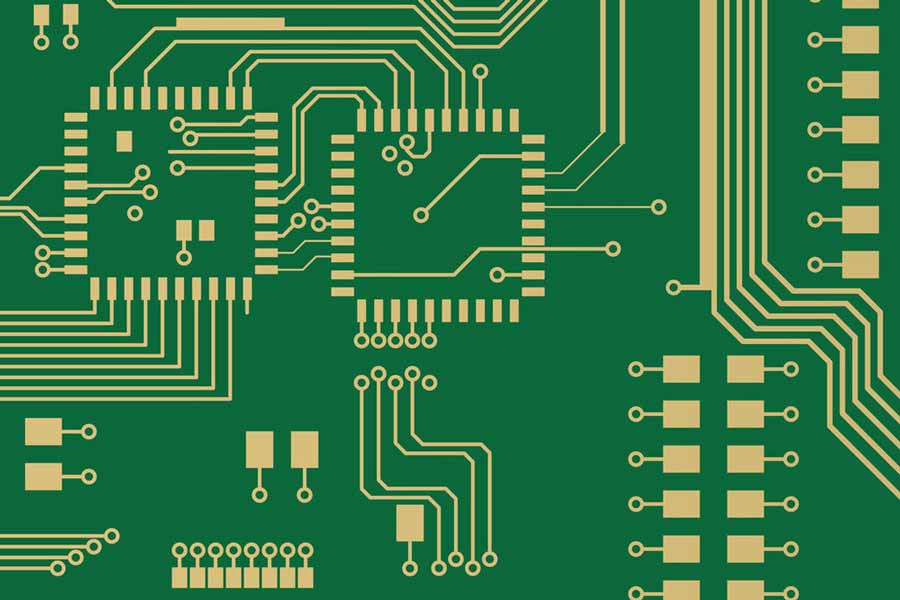In electronics manufacturing, printed circuit boards are separated into three categories: 1, 2 and 3. The categories reflect the level of quality of each circuit board type, from lowest (Class 1 standards) to highest (Class 3 standards). This classification system was developed and is monitored by IPC under the IPC-6011 standard.
Perhaps the major difference between each class is the degree of inspection electronics assemblies must undergo and the quality standards to which they’re subjected. Understanding the classes and their requirements can be helpful to OEMs who aren’t sure to which class their product should belong. Factors like customer requirements and cost can weigh heavily in deciding which class to pursue.
Let’s take a look at the IPC class definitions and when you should consider each of them a possibility for your product:
Class 1 Electronics: General Electronics Products
This class is the broadest and defines most consumer electronics that people use on a daily basis. These kinds of PCBs are used in products that don’t need to last a very long time and are not part of critical system. This level of boards also allows for various kinds of cosmetic defects as long the end product still functions.
Class 2 Electronics: Dedicated Service Electronics Products
Class 2 is more stringent than Class 1 but still allows for a number of general defects. This kind of PCB would be found in items like communications equipment or robust computers. As these boards need to be long-lasting, they have relatively high-performance requirements. Continuous operation is important for Class 2 boards but is not extremely critical.
Class 3 Electronics: High-Reliability Electronics Products
This is the highest level of general PCB, below military and aerospace products. These boards need to have uninterrupted service and should operate on demand. Reliability is of utmost importance for Class 3, as these circuits are used in things like life support systems and flight control computers.
What do Class Definitions Mean?
Practically the three class definitions and their jargon come down to the number and severity of allowable defects in a PCB. Class 1 can accepted a large number of issues that are relatively bad, while Class 3 requires very few manufacturing problems. If there are too many flaws in a board or any extreme issues exist, the PCB will not even be able to rank at Class 1. Most manufacturing try to fabricate all of their boards to a decent standard unless they need to hit a very low price point for a Class 1 PCB. Sometimes it’s not a matter of creating very high-quality boards, but rather checking them for defects and sorting them into the appropriate class.
While most manufacturers attempt to create reliable boards, it’s important that you specify which class of board you want a design to be. Some fabricators may not have the equipment required to meet the high standards for a Class 3 board. And in a number of cases, a Class 2 board may meet the criteria for your board’s performance and operational lifecycle. If so, your board’s manufacturing will have a higher yield rate and save costs if you opt for Class 2 where your PCB should last for 3-5 years instead of the 15 years for the more stringent Class 3. However, if your board is for a mission-critical application then you must have Class 3.
Examples of Defect Criteria
There can be a number of defects present on any given board and IPC’s standards specify which defects are acceptable for all of them. This includes defects that may impact performance, as well as those that are purely cosmetic and will have virtually no impact on performance or reliability.
Annular Rings: IPC’s guidance on annular rings defines how centered the hole has to be, the width of the ring around the hole, and more. A Class 1 ring allows for 180° breakout, whereas Class 2 can have a 90° breakout. For Class 3, the primary specification is that the ring measures at least 0.050 mm around the hole. As you can see, the requirements become more and more stringent for each class.
Solder Joints: Another example of something IPC specifies is solder coverage for joints. With through-hole components, this might mean how well the lead in the via is wetted with solder. Class 1 has no specification, Class 2 needs 180°, and Class 3 requires 270°.
Component Misalignment: One problem with many SMT components is that they overhang their solder pad or even tombstone. IPC guidelines for component overhang are:
Class1-less than 50% of termination or pad width,
Class2-also less than 50% of termination or pad width, and
Class3-less than 25% of termination or pad width.
Sometimes, there are no specifications for Class 1 but various guidelines for the same defect for Classes2 and 3. Other times, all three classes share the same requirements for a defect, or they all have individual tolerances. The IPC board classification is complex and selecting the proper class for your board requirements for a defect, or they all have individual tolerance. The IPC board classification is complex and selecting the proper class for your board requires a thorough understanding of each the standard’s requirements, the associated manufacturing considerations and what is needed to meet your design objectives.



